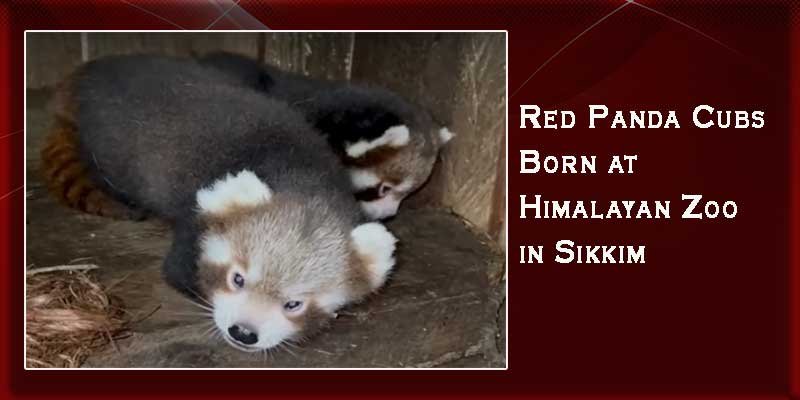Sikkim: Red Panda Cubs Born at Himalayan Zoo, Ending 7-Year Breeding Drought
Born on June 15, 2025, to red pandas Lucky(II) and Mirak, the cubs represent a breakthrough for the zoo’s Red Panda Conservation Breeding Programme.

GANGTOK- In a significant milestone for wildlife conservation, the Himalayan Zoo in Bulbuley, Gangtok, has welcomed two red panda cubs, marking the first successful breeding in seven years.
Born on June 15, 2025, to red pandas Lucky(II) and Mirak, the cubs represent a breakthrough for the zoo’s Red Panda Conservation Breeding Programme, which has faced numerous challenges since its inception in 1997.
The birth of these cubs ends a seven-year hiatus in breeding success, attributed to setbacks like two outbreaks of Canine Distemper that decimated the zoo’s captive red panda population.
Also Read- ECI Schedules Vice‑President Poll on September 9 Following Jagdeep Dhankhar’s Resignation
“This is a moment of hope and recovery for our conservation efforts,” said Gut Lepcha, Additional Director of the Himalayan Zoological Park. “The cubs are healthy, and their parents are proving to be attentive caregivers, which bodes well for their survival.”
The Red Panda Conservation Breeding Programme began with two red pandas, Preeti from Rotterdam Zoo and Jugal from Darjeeling’s Padmaja Naidu Himalayan Zoological Park. In 2005, the programme expanded with the addition of a wild-origin pair, Lucky and Ram, to enhance genetic diversity.
Despite early successes, the programme struggled with disease outbreaks and other challenges, making the arrival of these cubs a testament to the zoo’s perseverance and dedication to preserving this endangered species.
Also Read- Sentiyanger Imchen Appointed as New Chief Secretary of the Nagaland
Red pandas, native to the Eastern Himalayas, are listed as Endangered on the IUCN Red List, with an estimated wild population of fewer than 2,500 individuals. Their habitat faces threats from deforestation, poaching, and climate change, making captive breeding programmes critical for their survival.
Sikkim, where the red panda is the state animal, has long championed their conservation, and the Himalayan Zoological Park plays a pivotal role in these efforts. The cubs, whose genders are yet to be determined, remain under close observation by zoo staff.
They are expected to stay in their nest box for the next few months before venturing out, following the natural behavior of red panda cubs. The zoo plans to share updates on their progress, fostering public awareness about the species’ plight.
Also Read- Assam Govt Hands Over PWD Engineer’s Suicide Case to CBI Amid Corruption Allegations
Conservationists and wildlife enthusiasts alike have hailed the news as a beacon of hope. “The birth of these cubs is not just a win for the zoo but for global red panda conservation,” said Dr. Moumita Chakraborty, a researcher specializing in red panda habitats.
“It underscores the importance of sustained efforts to protect this iconic Himalayan species.” The Himalayan Zoological Park continues to collaborate with international zoos and conservation organizations to strengthen its breeding programme . With renewed optimism, the zoo aims to build on this success to ensure a brighter future for red pandas in captivity and the wild.









